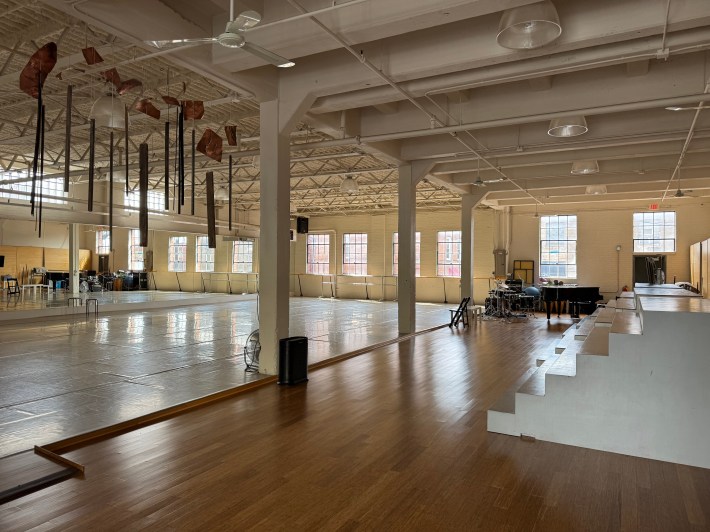Ever heard of forest tar?
According to an advertisement in the May 1, 1876, edition of the Minneapolis Tribune, you can get it in a variety of applications, including a salve, a soap, and even an inhaler. These can treat many ailments, including ulcers, burns, sore throat, and asthma. And you might not know about this miracle cure without the Minnesota Digital Newspaper Hub, an archive featuring high-resolution images of Minnesota-based periodicals spanning 175 years and several languages.
None of its information would be available to historians, scholars, or curious members of the public were it not for the hard work of the people at the Minnesota Historical Society. This is just one program that was affected when the National Endowment for the Humanities canceled more than 1,000 grants earlier this year.
It’s not just the National Endowment for the Humanities. This year, Minnesotans have had the rug pulled out from under them by an alphabet soup of federal agencies, including the National Endowment for the Arts, the National Institutes of Health, the National Science Foundation, and the Institute of Museum and Library Services.
Nobody interviewed for this piece had ever had a grant canceled after it was awarded until 2025, signaling a dramatic shift as the Trump administration continues its purge of federal government investment. Since other publications have already reported on similar cuts to medicine and the natural sciences, we’ll focus here on the impacts of these cuts across the arts, humanities, and social sciences, including education research.

Siphoning Grant Funding, from Historical Archives to Contemporary Dance
Since 2007, the National Digital Newspaper Program has helped fund work at the MNHS that fueled both the Minnesota hub and a federal website called Chronicling America. In that time, MNHS has received eight awards to fund newspaper digitization from the NEH. However, the most recent grant, awarded in 2024, was one of 1,200 NEH grants that the Trump administration canceled earlier this year. According to Anne Levin, who runs newspaper digitization for the MNHS, this sort of unanticipated financial hurdle is unprecedented.
In addition to 8,723 issues of the Tribune, the Minnesota Digital Newspaper Hub provides access to 3,134 issues of the Minneapolis Spokesman, an African-American newspaper and predecessor to today’s Minnesota Spokesman-Recorder. Other browsable papers that have served Minnesota’s various ethnic communities include Swedish American Post, Native American Press/Ojibwe News, and American Jewish World. Some periodicals attached themselves to social and political movements, or took strong stands on the controversies of their day. The Labor World offered readers “a Complete Directory Of the Labor Organizations of Duluth and West Superior.” Both Sides, a paper that advocated “regulation not prohibition,” plastered its front page with whiskey ads.
“We have our own work here in Minnesota that we’ll keep doing, to digitize Minnesota newspapers,” Levin says. “But it was a great experience to work with the staff at the National Endowment for the Humanities and at the Library of Congress, but also awardees from all the other states. That was a really important network for us.”
Abdo Sayegh Rodriguez began dancing with St. Paul’s TU Dance Company in 2003. Today, he serves as executive director. According to Rodriguez, the first time the company applied for a grant from the National Endowment for the Arts, they were denied. Over the past few years, however, they’ve received several grants to help support performances. The most recent, which was terminated this year, was for $15,000—about 10% of the budget for their 20th anniversary performance. TU’s total annual budget is “almost a million dollars,” according to Rodriguez.
Like other recipients of federal grants, Rodriguez first started to worry after President Trump was inaugurated for a second time. In February, he emailed the NEA to ask what was up.
“They responded pretty quick,” Rodriguez remembers. “And they said, ‘We don’t know anything. Right now everything is on pause.’”
On May 2, TU received another email from the NEA, this time saying that their grant was canceled. “That promise was un-promised,” Rodriguez says. In May, the three staffers on NEA’s dance team announced they had taken the administration’s resignation offer.
“Nonprofits don’t have much room, if any,” in their budgets, Rodriguez reports. “We’re also still recovering from the pandemic. Our school used to have 200, 250 kids. Right now we have 80, 90 kids, and we still provide scholarships.”
The school is a particular point of pride for TU, especially when it comes to applying for public funding. “We provide service to the community. We are a dance company that provides education to kids of color that otherwise won’t have the opportunity,” Rodriguez says.

From Norwegian Nazi Fighters to Japanese Textbooks…
Other organizations are also feeling the financial crunch. The Norwegian American Historical Association, based in Northfield, had a grant canceled for a project studying Norwegian American solidarity with Nazi-occupied Norway during World War II.
“We’ve been scrambling to find other sources of funding to keep the project moving forward,” says Amy Boxrud, the executive director. “We just feel like every day that we can keep [archivist Kristina Warner] working on this project are days that more and more materials are digitized and more and more history is available to our researchers.”
A team of researchers at the U of M’s Wangensteen Historical Library had been working on a project to digitize “flap books,” a kind of interactive book which was used in centuries past to teach medical students about the human body. Their canceled grant was originally both for digitizing the U’s collection and for establishing a protocol to help other librarians digitize interactive books. These books are “really, really fragile,” according to library curator Emily Beck. The project is currently on hold while the researchers look for replacement funding. (In the meantime, check out their prototype website.)
Here’s a non compressive tally of other canceled grants in the arts, humanities, and social sciences…
- A collaborative project by Kate Derickson (U of M) about the history of South Carolina’s Gullah Geechee people
- A Minnesota Humanities Center project researching marginalized groups in the military
- Kelly Lane’s (U of M) research on inaccurate narratives in undergraduate biology classes and their impact on gender non-conforming students
- Sarah Eddy’s (U of M) research on improving biology education at Hispanic-serving colleges
- A project about educating young people by the U of M’s Center for Climate Literacy
- A student’s dissertation researching child mortality at the Minnesota Population Center
- A course at Normandale Community College teaching the comparative environmental history of the U.S. and Vietnam
- A concert by the Alive & Kickin' Senior Rock Ensemble
- The Children of Dharma show by the Ragamala Dance Company
- Artist residencies at the Chicago Avenue Fire Arts Center
- The premiere of Fifty Boxes of Earth, performed by Theater Mu
- Several projects at the Science Museum
- A youth apprenticeship program at Stages Theater Company
- Digitizing old issues of American Craft magazine

The NEA placed new restrictions on future grant applications, highlighting a few specific topics, such as the 250th anniversary of the U.S., historically Black colleges and universities, and economic support for Asian American artists. That last category was surprising to the staff at Ananya Dance Theater in St. Paul, who also had a grant terminated. Their work combines contemporary dance with South Asian traditions.
“This is what we do every day,” says Jennie Ward, the managing director. “It really demonstrates the arbitrary and capricious nature of all of these terminations. It was not thoughtful. It was not intentional.”
Some organizations have decided to fight the government to get their costs reimbursed. The St. Paul Chamber Orchestra is currently pursuing reimbursement, according to a spokesperson. The Minnesota Latino Museum has already succeeded in getting reimbursed, according to executive director Aaron Johnson-Ortiz. Their grant was for "Alebrijes: Keepers of the Island," a popular art exhibit on Raspberry Island in St. Paul.
“I decided from the very beginning to not react in the way they wanted us to react, and to say, ‘we’re going to survive, we’re going to get through this, we’re going to fight this,’” Johnson-Ortiz says. “That’s exactly what we did. I was right all along.”
The exhibit has been “a wild success,” according to Johnson-Ortiz. “I think we’re at almost 40,000 visitors at this point.”








